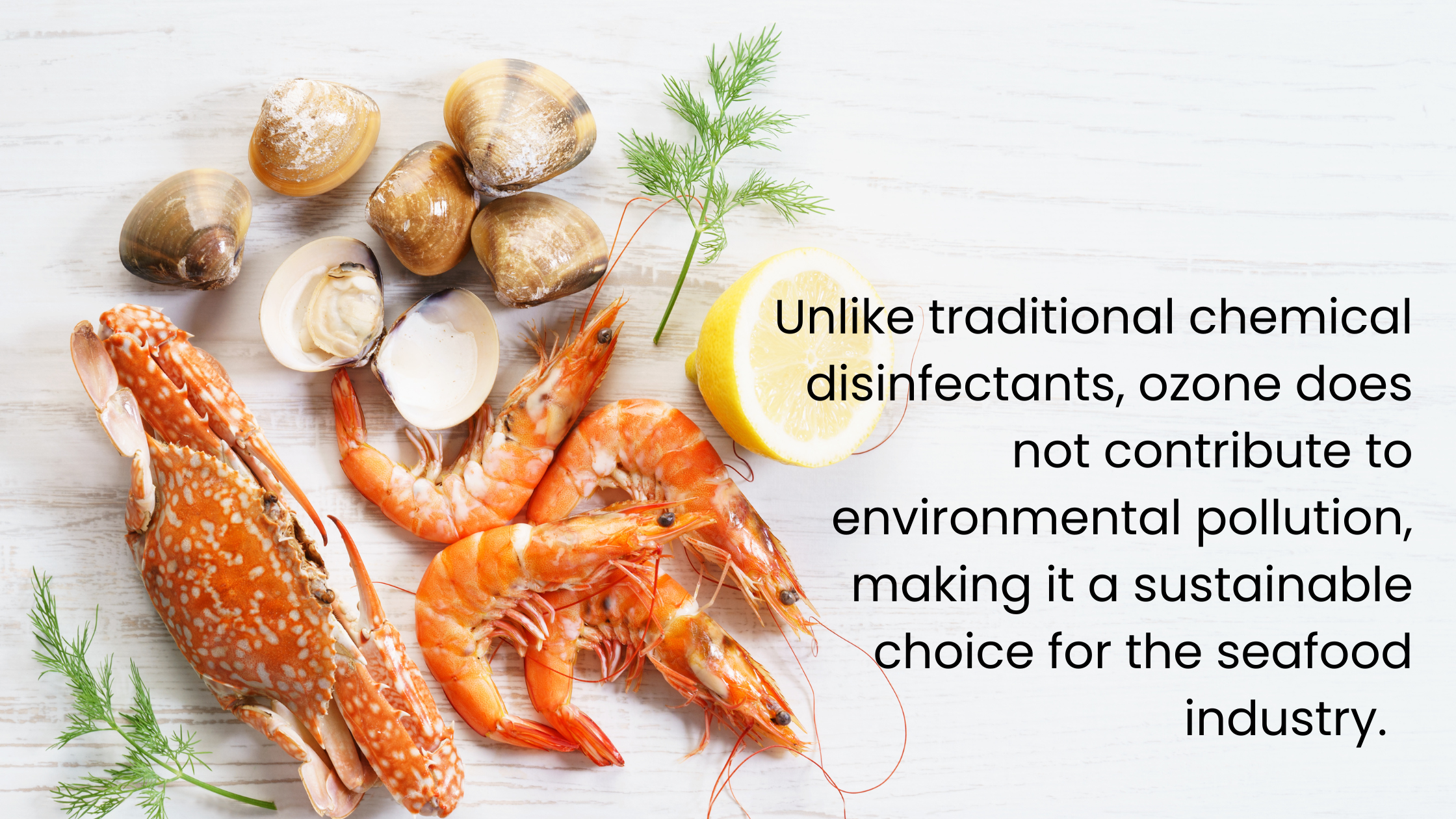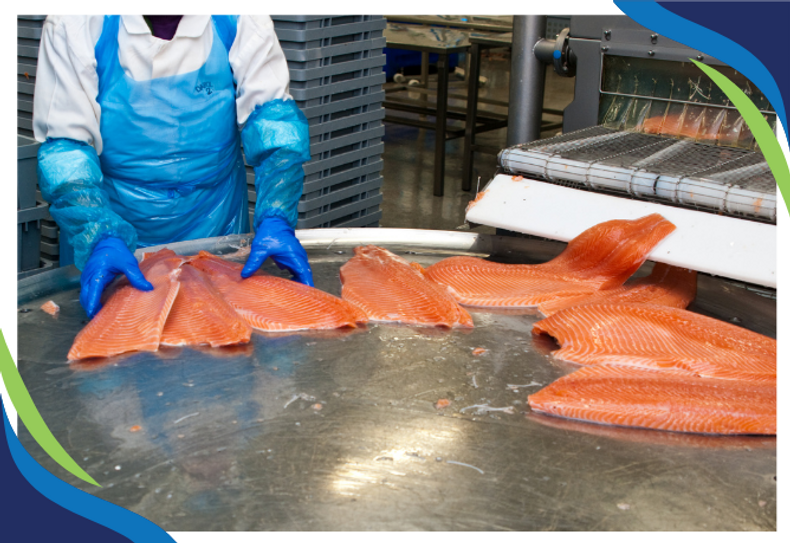The global seafood industry plays a vital role in providing nourishment to millions of people worldwide. However, the industry faces significant challenges, including the need for sustainable and eco-friendly processing methods. In recent years, ozone solutions have emerged as a promising technology, offering a breath of fresh air for seafood processing. In this blog post, we will explore the applications of ozone solutions in the seafood industry and how they contribute to sustainability and improved product quality.
Understanding Ozone Solutions
Ozone (O3) is a powerful oxidizing agent composed of three oxygen atoms. It is known for its ability to disinfect, deodorize, and break down organic and inorganic compounds. Ozone solutions involve the controlled application of ozone in various stages of seafood processing to enhance hygiene, extend shelf life, and reduce environmental impact.
- Seafood Processing and Ozone: A Perfect Match: Ozone solutions find applications at different stages of seafood processing, from cleaning and disinfection to storage and packaging. The use of ozone helps eliminate bacteria, viruses, parasites, and molds without leaving harmful residues, making it an eco-friendly alternative to traditional chemical-based methods.
- Enhancing Seafood Quality: Ozone's powerful oxidative properties contribute to the preservation of seafood quality. It helps control the growth of spoilage microorganisms, maintaining the freshness of the product. By reducing microbial contamination, ozone solutions lead to improved taste, texture, and overall sensory characteristics of seafood.
- Sustainability Benefits: Ozone is a naturally occurring gas that, when used in controlled concentrations, breaks down into oxygen without leaving harmful byproducts. Unlike traditional chemical disinfectants, ozone does not contribute to environmental pollution, making it a sustainable choice for the seafood industry. Additionally, the reduced need for chemical preservatives aligns with the growing demand for clean-label and minimally processed seafood products.
- Meeting Regulatory Standards: Ozone solutions can aid seafood processors in meeting and exceeding regulatory standards for food safety. As consumers increasingly prioritize food safety and sustainability, adopting ozone technology can enhance the industry's reputation and marketability.
- Challenges and Considerations: While ozone solutions offer numerous benefits, it's essential to address challenges such as equipment costs, proper system design, and staff training. However, the long-term gains in terms of product quality, sustainability, and market competitiveness often outweigh the initial investment.
There are far more applications where we could utilize ozone solutions in the seafood industry.
Disinfection
Ozone's powerful oxidizing properties make it an effective disinfectant in the seafood industry. When seafood is treated with ozone, it acts as a potent antimicrobial agent, targeting and neutralizing harmful microorganisms. This includes bacteria, viruses, and parasites that may be present on the surface of the seafood. The disinfection process enhances food safety by reducing the risk of foodborne illnesses and contamination during processing.
Extended Shelf Life
The application of ozone in seafood contributes to the extension of the product's shelf life. By slowing down the growth of spoilage microorganisms, ozone helps to preserve the freshness and quality of seafood for a longer duration. Ozone inhibits the oxidation of fats present in the seafood, thereby delaying the onset of rancidity. This preservation mechanism ensures that consumers receive seafood products with optimal taste, texture, and nutritional value, even after a prolonged period.
Water Treatment
Ozone plays a vital role in water treatment processes integral to the seafood industry, especially in aquaculture systems. Aquaculture relies on maintaining clean and healthy water environments to cultivate seafood. Ozone is employed to purify water by effectively removing impurities, pathogens, and organic matter. This ensures that the water used in aquaculture remains free from contaminants, creating an environment conducive to the well-being and growth of seafood. Clean water is essential for preventing diseases and promoting sustainable aquaculture practices.
Removal of Odors
Unpleasant odors in seafood can be a deterrent to consumer acceptance. Ozone serves as an effective solution for removing these unwanted smells from seafood products. It achieves this by oxidizing volatile compounds responsible for off-putting odors. The oxidation process neutralizes and breaks down these compounds, resulting in a fresher and more appealing aroma. This not only improves the sensory characteristics of the seafood but also enhances the overall consumer experience.

Ozonated Ice
- Preservation of Seafood
Ozonated ice is utilized in the seafood industry as a method of preserving the freshness and quality of seafood products. When seafood is surrounded by ozonated ice, the ozone helps inhibit the growth of bacteria and other microorganisms, extending the shelf life of the seafood.
- Disinfection during Storage and Transportation
The use of ozonated ice ensures that seafood remains in a clean and disinfected environment during storage and transportation. Ozone's antimicrobial properties help reduce the risk of contamination, maintaining the safety of the seafood from the point of processing to the consumer.
- Preventing Odor Formation
Ozonated ice is effective in preventing the formation of unpleasant odors in seafood. By inhibiting bacterial growth and oxidation processes, ozone helps maintain the freshness of the seafood and reduces the likelihood of off-putting smells.
Ozonated Water
- Seafood Processing and Cleaning
Ozonated water is commonly used in seafood processing facilities for cleaning and washing seafood. It serves as a powerful disinfectant, eliminating bacteria, viruses, and contaminants from the surfaces of seafood products. This ensures that the seafood is free from harmful microorganisms before further processing.
- Sanitizing Equipment and Utensils
Ozonated water is employed to sanitize processing equipment, utensils, and surfaces in seafood processing plants. This helps maintain a hygienic environment, preventing cross-contamination and ensuring the overall safety of the processing facility.
- Aquaculture Systems
In aquaculture, ozonated water is used to maintain the cleanliness of water in cultivation systems. The ozone helps control and reduce the presence of pathogens, algae, and organic matter in the water. This is crucial for promoting a healthy environment for the growth of seafood in aquaculture operations.
- Ice Production
Ozonated water is sometimes used in the production of ice for seafood storage. By using ozonated water to make ice, the resulting ice carries some of the disinfecting properties of ozone. This can contribute to keeping seafood stored in ozonated ice in a cleaner and safer condition.
Ozone Solutions represent a breakthrough in the quest for sustainable and efficient seafood processing. As the seafood industry faces increasing pressure to adopt environmentally friendly practices, ozone technology stands out as a powerful tool to meet these demands. By embracing ozone solutions, seafood processors can not only enhance the quality and safety of their products but also contribute to a healthier planet and a more sustainable future for the industry.

